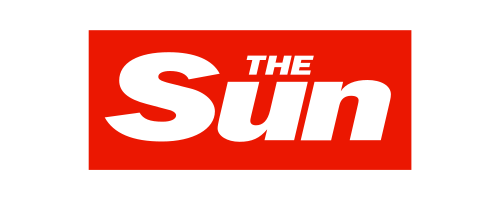Skip to the good bit
ToggleBusiness success today depends really but a lot on more than a good product or service: a team of talented, devoted, and driven members to move the company forward. The really good, great people are hard to come by: you need to look for them. Every business will require the right people to grow. But it is not straightforward and does not require luck. A top talent search can be channeled through a strategy. This is where the solid talent acquisition plan comes in.
While talent acquisition and recruitment have the same goal, which is to fill in the job vacancy, they are not exactly synonymous. Talent acquisition aims to recruit the highest quality and most qualified candidate that can become an integral part of the company’s long-term success. Recruitment, on the other hand will generally attempt to fill vacancies at the earliest with the first applicants who started to apply. For companies aiming to achieve long-term goals, a strategic approach to talent acquisition is highly essential. With the limited availability of quality talent in the current scenario, there is immense pressure on the recruiter to match the right talent with the right position posted and to fill a vacancy most immediately.
What Is a Talent Acquisition Strategy?
A talent acquisition strategy is simply a well-thought-out, long-term plan of finding top talent, creating and maintaining relationships with them, and convincing them to come and apply their skills and knowledge in your business. The strategy goes further than just hiring and incorporates a retention plan that keeps the newly found talent engaged and committed.
In today’s fast-paced environment, the retention of top talent undoubtedly does play a very big role in business success. A talent acquisition strategy serves to provide high-quality candidates not only based on candidates that meet the qualifications criteria but also whose organizational goals and values match those of the company.
Key Positions to be Looked at with a Strategic Talent Acquisition Approach
Specialized Markets: The field needs specialized skills, e.g. medicine, law, finance that make the fields highly competitive.
High- Growth Companies: Companies growing so fast needs to get best skills to maintain the growth.,
Senior Leadership Roles: Senior roles in organizations require personnel that have extraordinary skills and leadership.
How to Plan for Talent Acquisition
Be it an inefficient market or an industry going through a sea change, hiring and retaining some of the best minds in business define the ability of your firm in the long term. Ways to enhance your talent acquisition strategy include:
1. Define Your Business Goals
Do not kick off your talent acquisition process without first defining your organizational objectives. Define what you want to achieve and how you will achieve it, along with the kind of candidate who would fit your goals.
This will allow you to retain your recruitment in the context of your business growth plans. Understanding your long-term goals will help in recruiting candidates to be a part of that goal achievement.
2. Build a Strong Employer Brand
Employer branding is one vital strategy to enable the best talent pulling in an organization. This really is your branding as an employer—the way you bring your company to probable candidates. It involves setting clear expectations and also showcasing the work culture within your entity that highlights why one works for your company and why your company exists in the first place. A powerful employer brand is going to provide your business an edge to get more top-tier talent compared to the competing businesses.
Candidates want to work for good organizations; they identify themselves with effective employer brand utilized well can be an enormous time saver and opportunity maximizer for minimizing staff turnover and enhancing employee retention.
3. Employee Referrals
Good people usually know other good people. Employee referrals are valuable while acquiring talent, as current employees are likely to refer good people who will fit in with the organization. Research has also proven that referred employees tend to stay longer and perform better than those hired through traditional channels.
Hence, encourage your employees to recommend new people by providing certain referral bonuses or any other incentives.
4. Use Real-Time Market Data
The key to hiring top talent is recognizing it as a product, so you need data to back your decisions. The market data helps in getting an insight into what might be blocking quality talent from applying to your jobs and what can be done to hit the striker better.
Data-driven insights allow you to shape your job descriptions and recruitment strategies such that top candidates get appealed to.
5. The Right Technology
More often than not, recruiters are just faced with routine work and piles of papers. Talent acquisition platforms can do a better job in organizing recruitment to source and manage candidates in a more effective way. Such technology as an applicant tracking system mechanizes routine tasks and saves loads of time to spend on finding the right talent.
6. Modernize Work Culture and Environment
Work post-COVID has changed and hence so do the job expectations of the top talent. While away work is an employee preference for some, others would prefer their work on company gelling or working part-time remotely and some other times at the office. Your company’s work culture also heavily impacts talent attraction.
The best candidates are evaluating your business while you’re evaluating them. Ensure that the work culture and environment reflect what the talent you need to entice demands.
7. Effective Assessments
A robust assessment process is the quintessential key to identifying the right talent. The questions that you frame for the interviews and the parameters based on which you will evaluate your candidates should be relevant in respect to the role. This strategic approach will make sure that you are selecting people who will flourish in your organization.
Final Thoughts
It does require investment in time and resources to mingle with top-level talent in acquisition planning, but it is well worth the effort. Breaking down the talent gaps that exist in the company and understanding the kind of candidates that should come aboard will be useful in crafting a strategy to attract the very best while retaining them at the company. There is no one-size-fits-all method for talent acquisition, but if you apply the following steps, you could shape and eventually tap into that long-term success for your business.







